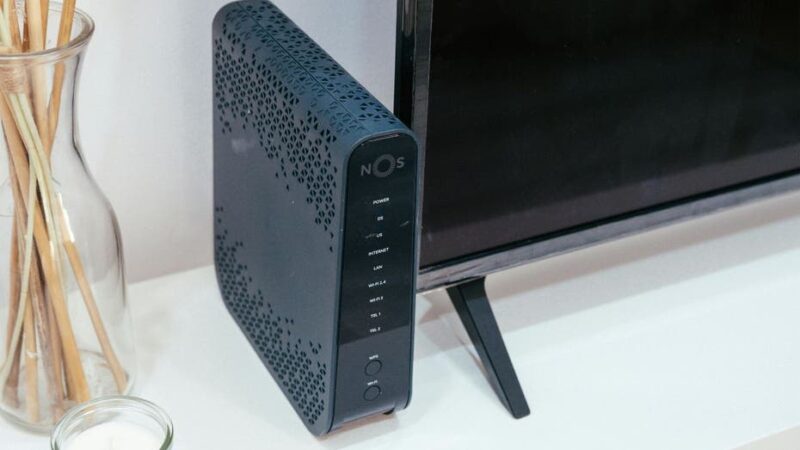How to Create a Professional-Grade Home Network

In today’s digital age, where remote work and virtual meetings have become commonplace, establishing a reliable home network is essential. A well-functioning network not only supports video conferencing and streaming but also ensures efficient management of your work tasks. Let’s explore how to set up a high-performance home network that is secure, reliable, and tailored to your needs.
The Importance of a Strong Home Network
As we increasingly rely on our internet-connected devices, a robust home network is no longer just a luxury; it’s a necessity. A well-configured network guarantees that your devices remain connected and that your online experience is smooth and hassle-free.
Choosing the Right Equipment
Before diving into setup, it’s crucial to understand the equipment you’ll need. Here’s a breakdown of the essential components for your home network:
1. **Router**: The heart of your network, responsible for distributing internet access to all connected devices.
2. **Switches**: Useful for connecting multiple wired devices, allowing seamless communication over a single Ethernet connection.
3. **Cables**: High-quality Ethernet cables such as Cat5e, Cat6, or Cat6a are essential for wired connections.
4. **Wireless Access Points**: For extending your Wi-Fi coverage, especially in larger homes.
Positioning Your Router for Optimal Performance
Start by placing your router in a central location within your home. This strategic placement minimizes physical barriers and enhances your Wi-Fi signal strength. The closer your devices are to the router, the more reliable your connection will be. For wired networks, connect a switch or Ethernet hub using a high-quality Ethernet cable to ensure optimal performance.
Configuring Security Settings
Once your router is installed, it’s time to configure its security settings. Access the router’s online setup page using the instructions provided with the device. Key settings to focus on include:
– **Renaming your network**: Personalize your Wi-Fi network name (SSID) for easier identification.
– **Updating the network security key**: Change the default password to something more secure to prevent unauthorized access.
Consider exploring the latest routers known for their security features to ensure your network is protected.
Wired vs. Wireless: Making the Right Choice
When setting up your home network, determine whether you prefer a wired or wireless configuration. Each has its advantages:
– **Wired Networks**: Offer enhanced security and faster speeds, making them ideal for gaming or heavy data usage.
– **Wireless Networks**: Provide the convenience of connecting multiple devices without additional hardware, perfect for everyday use.
For wired connections, use RJ-45 network cables to link your devices to the router or switch. Most modern routers support Gigabit Ethernet speeds (1,000 Mbps), so opt for high-quality cables for the best performance.
Expanding Your Network
Both wired and wireless networks can face connectivity challenges due to distance or physical barriers. To expand your network’s range, consider the following options:
– **Wi-Fi Extenders**: Boost your wireless signal to reach distant areas of your home.
– **Mesh Networking Systems**: Provide seamless coverage throughout larger spaces by using multiple access points.
Wireless networks typically operate on two bands, 2.4 GHz and 5 GHz, each with its unique benefits. The 2.4 GHz band covers more distance but is slower, while the 5 GHz band offers faster speeds but has a shorter range. Choosing the right band for your devices can greatly enhance performance.
Securing Your Home Network
Maintaining the security of your home network is vital for protecting your personal data. Here are some best practices to follow:
– Regularly update your router’s firmware.
– Use strong, unique passwords for your network and connected devices.
– Disable guest access if not needed.
Check your internet speed and reliability, as these factors greatly affect your overall network performance. If you’re experiencing frequent lags or connectivity issues, it might be time to consider upgrading your internet plan.
Investing in Your Digital Infrastructure
Setting up a reliable home network might seem daunting, but with the right approach, it can be a straightforward task that significantly enhances your digital experience. By understanding your network’s components, prioritizing security, and investing in quality equipment, you can create an efficient digital infrastructure that supports both work and leisure activities.
Engage with Us
What other home technology topics are you interested in? We’d love to hear from you! Share your thoughts and questions with us.
For more tech tips and security alerts, subscribe to our newsletter for the latest updates. Follow us on social media for quick video tips and insights on maximizing your home network and devices.
Your journey to a professional-grade home network starts here—let’s make it happen!


